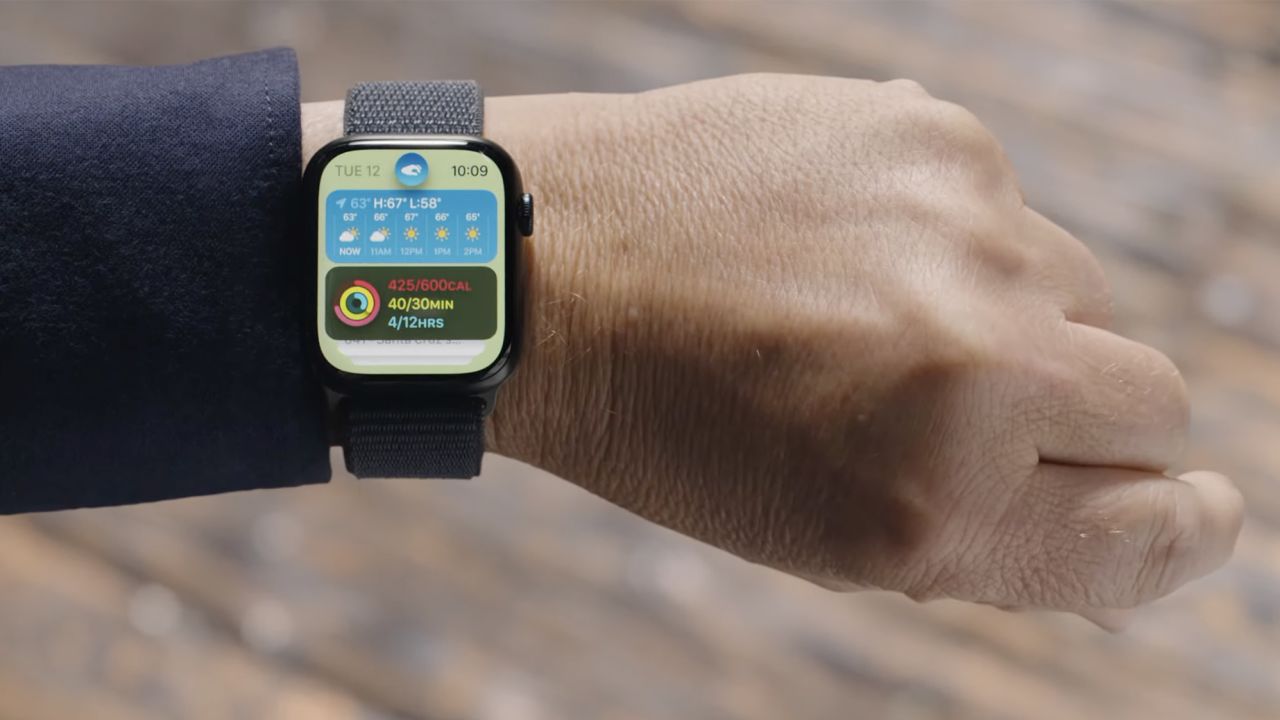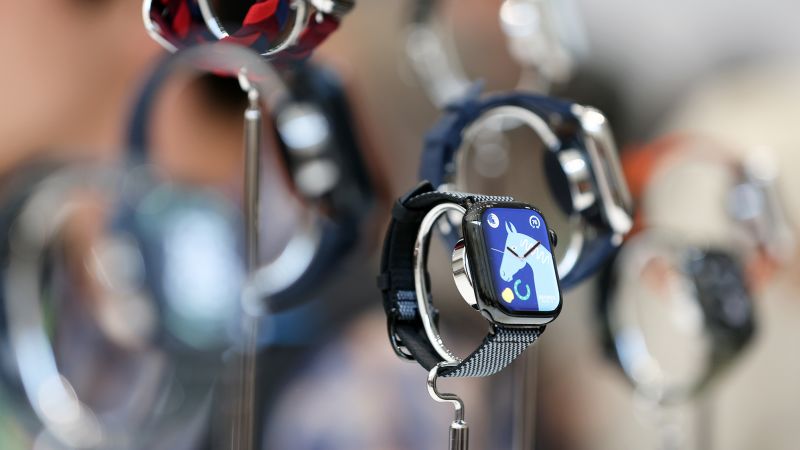You’re about to see people in public tapping two fingers together in the air.
Over the past few days, I’ve been taking phone calls, playing music and scrolling through widgets on the new Apple Watch Series 9 without ever touching the device. I’ve used it to silence my watch’s alarm in the morning, stop timers and open a notification while carrying too many bags.
It may sound like a gimmick — and it most certainly feels strange to do it in public — but considering the small size of the Apple Watch screen, the tool offers an effective hands-free way to interact with the device.
Apple’s latest lineup of smartwatches, the Watch Series 9 and high-end Ultra 2, feature a new gesture tool called Double Tap, allowing users to tap their index finger and thumb together twice, to control the device. It can also scroll through widgets, much like turning the digital crown.
The feature isn’t entirely new; the previous generation of Apple Watch Ultra was capable of similar pinch-and-clench gestures via its Assistive Touch accessibility tool. But Apple’s decision to bring a feature like this to the forefront hints at an increasingly touch-free future. It also comes three months after the company unveiled the Vision Pro mixed reality headset, which will launch next year, with a similar finger tap control.
Double Tap works in combination with the latest Apple Watch accelerometer, gyroscope and optical heart rate sensor, which looks for disruptions in the blood flow when the fingers are pressed together. That data is processed by a new machine learning algorithm and runs on a faster neural engine, specialized hardware that handles AI and machine learning tasks.
While the concept is similar, gesture controls are different on the Vision Pro, which will track users’ eyes and hand movements. Apple told CNN it added gesture control to the headset because it needed a different, seamless interface for users to interact with, whereas Double Tap is more about simplifying the Apple Watch experience.
When the Apple Watch’s display is turned on, the device automatically knows to respond when it senses the fingers are touched together. It essentially works as a “yes” or “accept” button; that means if a call comes through, you can Double Tap to accept it (covering the watch with your full hand, however, will silence it quickly). If a song is playing, you can pause it by double tapping, and then again to start it.
Although you can subtly flick on the display and do the gesture close to your body, trying to conceal the movement when around other people, I found it works much better when it’s raised a bit higher. This, however, makes the action more obvious — and it’s something that will take a little getting used to seeing in person.
“This is also about social acceptance. At the moment, I find the idea of people making this gesture more often than not in public a bit funny. But time will tell if users find it acceptable,” said Annette Zimmerman, an analyst at Gartner Research. “I think Apple is very use-case driven and focuses on user feedback on things they could improve.”
Similarly, it took a while for people to get used to the design of Apple’s AirPods when they were announced in 2016; many criticized how they looked dangling out of users’ ears. Now they’ve become part of modern culture.
Other learning curves exist with the Double Tap feature. Because I am right handed and wear an Apple Watch on my left hand, tapping my left fingers together to trigger the control takes an extra second or two of mental coordination.
The future of hands-free devices

Apple isn’t the only tech company developing gesture controls like this. Samsung TVs, some smartphones and Microsoft’s mixed reality headset all incorporate some hand gesture functionality. But this is Apple’s biggest push to date, and adding it to a flagship device like the Apple Watch will soon put all eyes on the concept of hand gestures.
“It’s a great move by Apple as it differentiates the company from other brands when it comes to innovation and ease of usability. It also shows Apple’s commitment in the fields of artificial intelligence,” said Sachin Mehta, senior analyst at tech intelligence firm ABI Research. “The new double tap gesture is not a surprise as Apple keeps on developing a unified and intuitive user experience across its product line up. It will cement the Apple Watch as the smartwatch to have.”
It works differently on the Vision Pro, which will track a user’s eyes and hand movements to make punching and swiping controls. The headset needed a different user interface for users to interact with it, and gestures give that control even when a face is covered by the hardware.
Further showing how Apple is thinking about gesture control long term, it recently filed for patents focused on gesture controls, including for the Apple TV. That said, Mehta believes there’s no question “we expect more gesture features in Apple’s product lineup in the future.”
In addition to Double Tap, the Apple Watch Series 9 features Apple’s powerful new in-house silicon chip and ultrawideband connectivity. It will let users log health data with their voice, use “name drop” to share contact information by touching another Apple Watch and raise their wrist to automatically brighten the display. The Series 9 will come in colors such as pink, navy, red, gold, silver and graphite.
Apple also showed off the second iteration of its rugged Ultra smartwatch line, featuring the updated S9 custom chip and a new ultrawideband chip which uses radio waves to communicate. It also features more information on the display for more intensive tracking.
The Apple Watch Series 9 will start at $399 and the Ultra is priced at $799. Although they start shipping on Friday, September 22, the Double Tap feature will launch via a software update next month.
Read the full article here











Leave a Reply